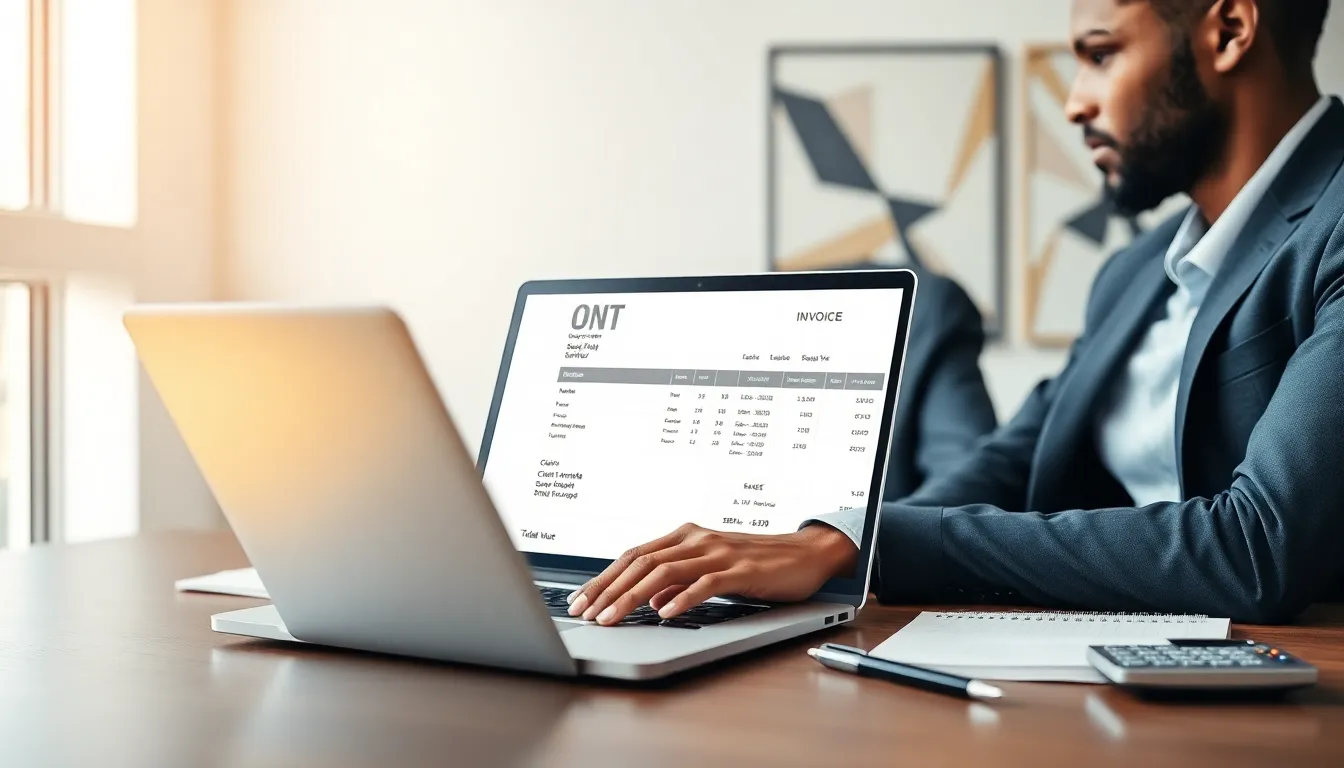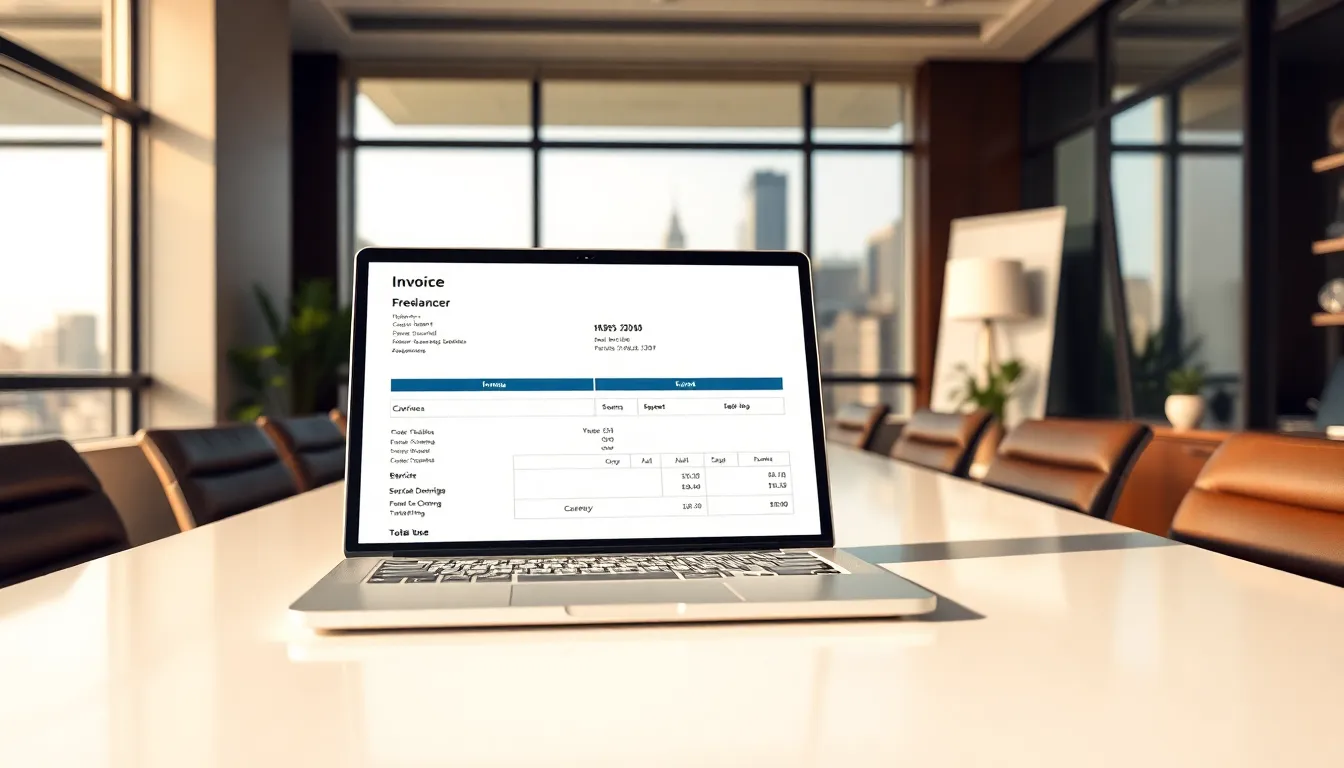Freelancing comes with its fair share of challenges, and invoicing can sometimes feel like the most challenging job of all. Have you ever sent an invoice into the wild and felt like you were tossing a message in a bottle into the ocean? You hope it reaches your client, but you’re left holding your breath. Well, worry no more. In this text, we’re diving into everything you need to know about creating a stellar invoice as a freelancer. Think of it as your freelance lifeline, an opportunity to get paid for your hard work while looking professional at the same time. Let’s get started.
Table of Contents
ToggleUnderstanding Freelancer Invoices

Importance of Invoicing as a Freelancer
Invoicing is more than just a formality: it’s your ticket to getting paid. A well-crafted invoice serves as a legal document that outlines the terms of your agreement. Freelancers must understand that each invoice represents not just a monetary transaction but also the culmination of their efforts and services. When clients receive a clear and professional invoice, it reflects positively on the freelancer’s reputation. This sets a tone of trustworthiness and reliability in future engagements.
Legal and Tax Implications
Freelancers must be aware of the legal and tax implications tied to invoicing. Each invoice can be a reference point during tax season, aiding in accurate income reporting. It’s not just about getting paid: it’s about keeping your records in order. Mismanagement of invoices could lead to financial issues down the line, including potential audit complications. Staying on top of invoicing helps freelancers ensure compliance with tax regulations and makes filing taxes a much smoother experience.
Basic Components of a Freelancer Invoice
Essential Elements to Include
Every freelancer should know what to include in their invoices. First and foremost, the invoice needs a distinctive title, such as “Invoice” or “Billing Statement.” Next, it should feature your name and contact information, followed by the client’s details. List the invoice number, this helps with tracking, along with the invoice date and the due date for payment. Don’t forget to specify the services provided, including detailed descriptions and rates. Add any applicable taxes and the final amount due to complete the package. By incorporating all these elements, freelancers ensure their invoices are both comprehensive and easy to understand.
Invoice Design and Formatting
Choosing the Right Template
Design plays an important role in how invoices are perceived. A cluttered or unprofessional design can undermine the value of the work you’ve done. Luckily, freelancers have various options when choosing templates. There are free and paid templates available from software like Microsoft Word and Excel, as well as dedicated invoicing platforms. Whichever route taken, aim for simplicity, professionalism, and clarity. A visually appealing invoice will make a positive impression on clients.
Customizing Your Invoice Layout
Customization is key to making an invoice feel personal. Freelancers should add their branding elements, such as logos and color schemes, to make the invoice truly theirs. A well-branded invoice not only stands out but also reinforces professional identity. Experiment with layouts that best complement the information provided. A clean layout can enhance readability, ensuring that clients can easily find what they need without feeling overwhelmed.
Step-by-Step Invoice Creation Process
Collecting Client Information
Before starting the invoice, proper data collection is essential. Gather all necessary client information including name, address, and email. Speaking directly with clients can streamline this process, as they might provide specific preferences about how they want to be billed. The more accurate this information is, the smoother the invoicing process will be. Freelancers can avoid potential issues by verifying details, such as spelling and contact methods, before generating an invoice.
Detailing Services Provided
Next comes detailing services rendered. Freelancers must articulate what was done, how long it took, and the value it brings to the client. Being specific is critical. Rather than just stating “graphic design work,” descriptions like “created six high-resolution graphics tailored for social media campaigns” can paint a clearer picture of the effort involved. This not only supports the price charged but also fosters appreciation for the work.
Calculating Totals and Taxes
Finally, calculating totals and applying taxes cannot be overlooked. Compiling all different services into a single amount may seem straightforward, but it’s vital to include accurate tax calculations based on local regulations. Keep in clear sight any potential discounts or adjustments that must be factored into the final sum. Ensuring all calculations are correct avoids confusion and ensures that the freelancer receives what they’re owed.
Finalizing and Sending the Invoice
Best Practices for Invoice Management
Once the invoice is crafted, freelancers should adhere to best practices to manage it effectively. Storing invoices digitally ensures they can be easily referenced or resent if needed. Keeping a backup of sent invoices can prevent any miscommunications or disputes. Plus, timely follow-ups are crucial. Send a gentle reminder if a payment has not been received by the due date. Clients often appreciate a nudge rather than letting overdue invoices happen silently.
Tracking Payments and Follow-Ups
Tracking payments can be daunting, but it’s vital. Use software tools that can automate this process or at least keep detailed records. Either way, documenting payments helps freelancers monitor who has paid or who needs a follow-up. Setting internal reminders for following up on outstanding invoices can also help maintain a steady cash flow. This small effort can ensure that freelancers are paid promptly.





